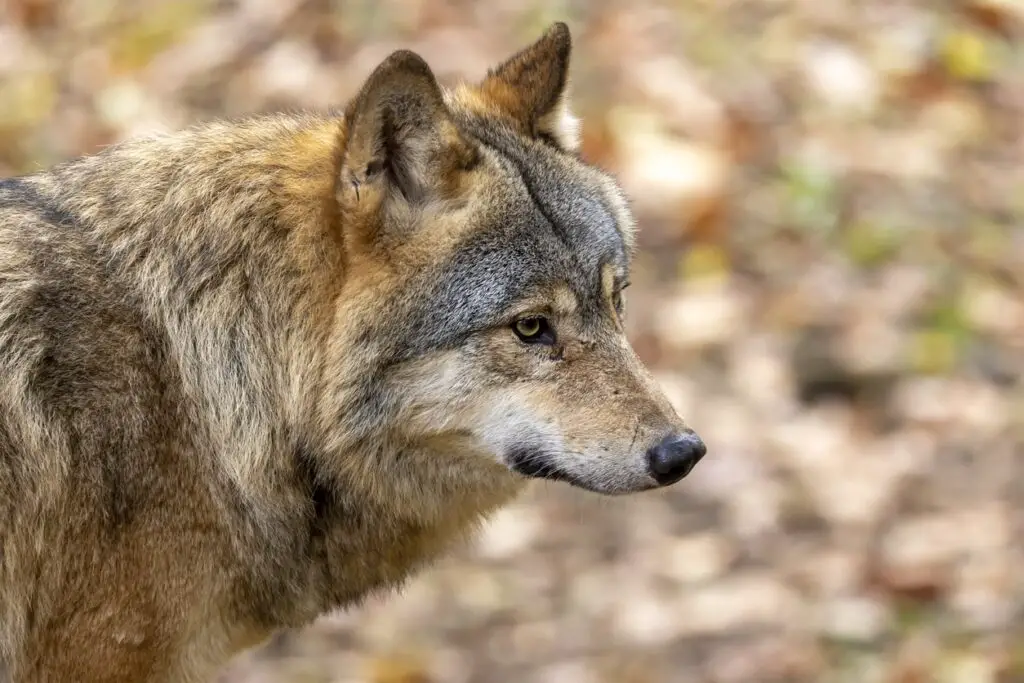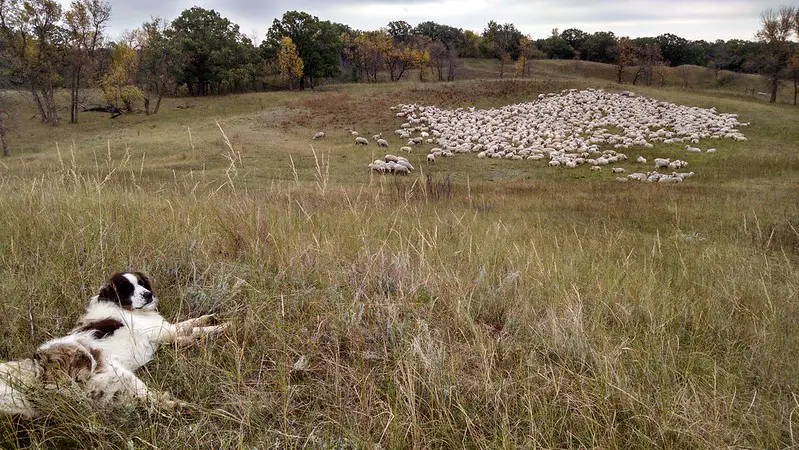The Eurasian wolf (Canis lupus lupus) is also known as the Russian wolf, Russian grey wolf, Common wolf, Carpathian wolf, European wolf, Steppes wolf, Tibetan wolf, Chinese wolf, and a few other names.
Eurasian wolves are a subspecies of the grey wolf and, at one time, were widespread throughout Asia and Europe.

History of the Eurasian wolf.
Like its American cousins, the Eurasian wolf faced animation and extinction from habitat loss and human-organized efforts such as hunting, trapping, and poisoning. Eurasian wolves were extirpated in England, Ireland, Sweden, and Norway.
In the 1950s, as human populations moved from rural to suburban and urban areas, the Eurasian wolf had less frequent encounters with humans, and its numbers started to recover. By the early 2000s, the Eurasian wolf had recolonized parts of Sweden and Norway and even enjoyed some government protections.
Eurasian wolves still prey on livestock.
Eurasian wolves remain a severe problem for farm animals for three reasons. Firstly, Eurasian wolves are surplus killers, frequently killing livestock that they do not feed upon. Secondly, they often attack even protected flocks—killing some and leaving many others so severely injured as to require destruction. Lastly, they will even attack and kill livestock guardian dogs.

Using livestock guardian dogs to protect against Eurasian wolves.
Livestock guardian dogs (LGD), like the Maremma, are used with great success in the United States. However, many farmers with livestock are exposed to potential predation by the Eurasian wolf, sometimes even suffering the loss of the dogs guarding the flocks.
The effective use of livestock guardian dogs requires that a flock be guarded with a sufficient number of LGDs. These dogs must live with the flock at all hours and throughout the year. LGDs are not herding animals; they must be bonded to the herd and allowed to intermingle among them to detect an intruder.
Livestock guardian dogs serve as a deterrent through their presence among the flock by barking, displaying aggressive behavior, and fighting with the wolf if it doesn’t retreat.
In some parts of Europe and Asia, some farmers cannot afford and maintain a large enough number of healthy livestock guardian dogs. As a result, many LGDs are killed and consumed by Eurasian wolves.
Eurasian wolf description.
The Eurasian wolf is the largest grey wolf subspecies in Europe. While the average weight is 85 pounds, larger Eurasian wolves have weighed more than double that—coming in at over 170 pounds.
To handle the colder climes found in many Northern European countries like Russia, the Eurasian wolf has a coat that is coarser, denser, and shorter than that of the gray wolves of the United States.
The Eurasian wolf coat is beige with a white chest and white mask extending from just below its eyes, cheeks, down and under its lower jaw.
Eurasian wolves are about five feet in length and two and a half feet tall at the shoulder.
Communication howls of Eurasian wolves.
According to Erik Zimen, a Swedish behavioral scientist, the howls of Eurasian wolves are more protracted and melodious than American gray wolves. Mr. Zimen specialized in the behavior of wolves and dogs, carrying out his research in Bavarian forests and the Parco Nazionale d’Abruzzo, Lazio e Molise, Italy, and theorized Eurasian and American gray wolves howls would have been mutually intelligible.
Eurasian wolf diet.
The Eurasian wolf preys on moose, wild boar, reindeer, ibex, musk deer, red and roe deer, and wild goats.
When living in proximity to human populations, it will raid livestock and consume human garbage, much like the American coyote.
Reproduction and society of the Russian grey wolf.
A mated pair of Eurasian wolves can produce one litter of pups yearly. The average size of a Eurasian wolf litter is 4-6 pups. Puppies will usually stay with the alpha male and female for two years before dispersing and seeking out another unrelated (for genetic reasons) pack or mate.
Eurasian wolves hunt in packs with other unrelated (genetically) wolves, unlike coyotes. Within a family unit, wolves work together to protect their territory, raise their young, and hunt larger prey. They communicate with each other by howling, barking (usually only by juveniles), whimpering, and snarling.
Wolves also communicate with each other using body language; even humans can easily translate it. For example, a subordinate Eurasian wolf approaches a dominant pack member by tucking its tail between its legs, pinning its ears back, and slinking toward it—ready to submit.
Friendly social equals and mates approach each other with raised heads, tails, and ears. Conversely, disputes between equals, non-pack members, and other threats are greeted with growls and displayed fangs.
Eurasian wolf howls are longer than coyote howls and noticeably smoother and more profound in their tone. However, the information being communicated in these howls is the same for each animal. For example, who is calling, where they are, and the sender’s mood (threatened or unthreatened).

